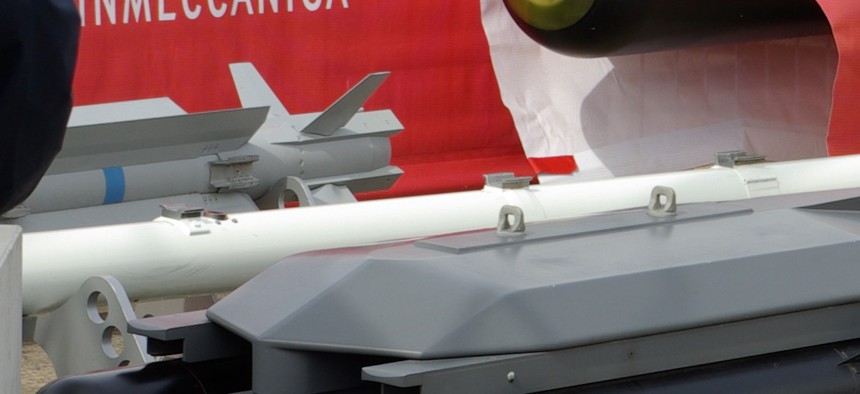Why the U.S. Should Use British Missiles on Reaper Drones
For compatibility and cost-effectiveness, military cooperation between nations must start from the beginning. By Peter Westmacott
During the Second World War, the U.S. gave Britain some aging destroyers in exchange for the use of British bases overseas. When the first American ships arrived, Winston Churchill went to inspect them, along with Franklin Roosevelt’s right-hand man, Harry Hopkins. When he saw the ships, Churchill muttered under his breath: “Cheap and nasty.”
Hopkins heard him and, somewhat taken aback, asked what he meant. “Cheap for us,” the prime minister said. “And nasty for them!”
Destroyers for Bases was soon succeeded by the much broader and more effective Lend Lease program. Since then, we have shared intelligence, equipment and expertise more and more closely.
At a test facility in California, the U.S. military has just finished testing a British-designed missile, the Dual-Mode Brimstone. The tests successfully proved that the Brimstone is compatible with one of America’s main unmanned aerial vehicles, the Reaper, and is a more accurate weapon than anything comparable on the market.
It makes sense to buy equipment that your allies have already developed, rather than invest millions or billions of dollars of taxpayers’ money to duplicate what’s already available. This more cost-effective approach to procurement is especially important when budgets are tight. I’m tempted to say it’s not rocket science—but in this case that’s not strictly true!
It’s an approach that’s worked well for the United Kingdom. For example, we have invested in C-17 transport aircraft, made in the U.S. by Boeing, in Boeing’s Chinook and Apache helicopters, and of course in Lockheed Martin’s F-35. I hope the U.S. will consider doing likewise with the Brimstone, and with other world-class products like BAE’s Hawk trainer jet.
Defense cooperation of a slightly different sort was on the agenda when I spoke recently at the Center for Strategic and International Studies in Washington, D.C. The panellists came at the issue from different angles, but they all shared a determination that the U.S. and its allies should work more closely together, both on and off the battlefield.
As you might expect, Britain and America lead the way. We have cooperated for decades to improve the effectiveness of our nuclear deterrents. The intelligence we share proves it’s worth every day in military operations and in our efforts against terrorism. And we are planning to take our cooperation even further.
In November 2013, for example, the U.K. received its first U.S.-built Rivet Joint surveillance aircraft. Eventually, we will run three; the United States will run 17. All 20 have been built to a common standard, so they can be used interchangeably to provide support to British and American troops whenever they operate together. We will also share training, maintenance and facilities.
New technology is changing the face of warfare. In the future, air missions will increasingly be remotely piloted, and battles will increasingly have a space or cyber component. With these emerging technologies, we have a golden opportunity to build cooperation into our strategies right from the beginning—an opportunity we should be sure to take.
We look forward to September, when the U.K. will host the 2014 NATO Summit in South Wales. Cooperation between NATO nations—including, of course, its European members—is in everyone’s best interests. We’ll make sure it’s at the top of the agenda in September.
Peter Westmacott is the British Ambassador to the United States.
NEXT STORY: Let NATO Keep the Peace in Palestine






